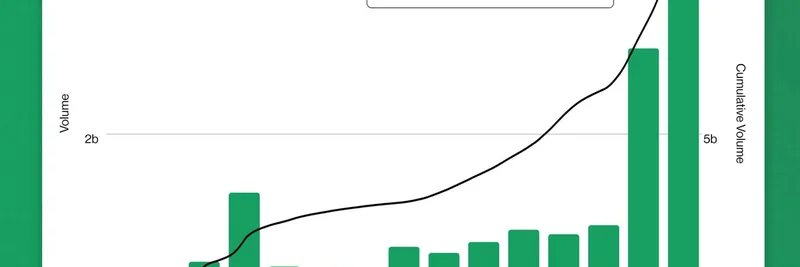In the fast-paced world of prediction markets, where folks bet on everything from election outcomes to weather patterns, Kalshi just dropped a bombshell. Crypto influencer StarPlatinum on X spotlighted this achievement in a recent post, noting that Kalshi clocked in a staggering $4.4 billion in trading volume for October 2025. That's not just big—it's the largest monthly volume ever recorded in the prediction market arena, even topping Polymarket's all-time high during the heated 2024 U.S. election cycle.
For those new to the scene, prediction markets are platforms where users wager on real-world events, essentially crowdsourcing forecasts through financial incentives. Kalshi, a U.S.-regulated exchange approved by the Commodity Futures Trading Commission (CFTC), allows traders to buy "yes" or "no" contracts on outcomes like political races or economic indicators. This centralized setup contrasts with decentralized players like Polymarket, which runs on blockchain technology and has gained massive traction in the crypto community for its permissionless betting.
What makes this milestone so buzzworthy? Kalshi's volume surge highlights the growing mainstream appeal of prediction markets, especially amid global events like elections that drive speculative trading. StarPlatinum called it the start of a "Kalshi supercycle," a term echoing crypto's bull runs where adoption and activity explode. Indeed, this record comes hot on the heels of Polymarket's own impressive figures, but Kalshi's regulated status might be drawing in more institutional and retail traders wary of crypto's volatility.
Looking at the chart shared by Kalshi Ecosystem, you can see the explosive growth: monthly volumes have been climbing steadily since mid-2024, with October 2025's bar towering over the rest at nearly $4.4 billion. The cumulative volume now sits at over $13.8 billion, underscoring sustained interest. This isn't just numbers on a screen—it's a signal that prediction markets are evolving into serious financial tools, potentially rivaling traditional derivatives.
The community reaction was electric. Replies to StarPlatinum's post ranged from excitement to insightful takes. One user, Jerry_Yuva, quipped that "prediction markets are quietly becoming the new perp exchanges," referring to perpetual futures platforms popular in crypto for leveraged trading. Others expressed surprise at Kalshi outperforming crypto-native rivals, while some simply cheered the "Kalshi supercycle confirmed." It's clear this news is resonating across the blockchain space, where prediction markets often intersect with meme token hype.
Speaking of meme tokens, this development has ripple effects for the Solana ecosystem, where StarPlatinum is a prominent voice. Solana-based memes like those tied to political themes or betting narratives could see boosted interest as traders hedge positions or speculate on market sentiment. Platforms like Kalshi provide real-time data that savvy meme traders use to gauge hype cycles, potentially amplifying volatility in tokens inspired by current events. For blockchain practitioners, understanding these dynamics is key to navigating the meme token landscape, where news like this can spark rapid pumps.
As prediction markets mature, keep an eye on how Kalshi's dominance influences crypto innovations. With regulatory backing and massive liquidity, it might pave the way for more hybrid models blending tradfi (traditional finance) and defi (decentralized finance). If you're diving into meme tokens or broader blockchain tech, milestones like this offer valuable insights into where the next big trends might emerge. Stay tuned— the supercycle might just be getting started.


